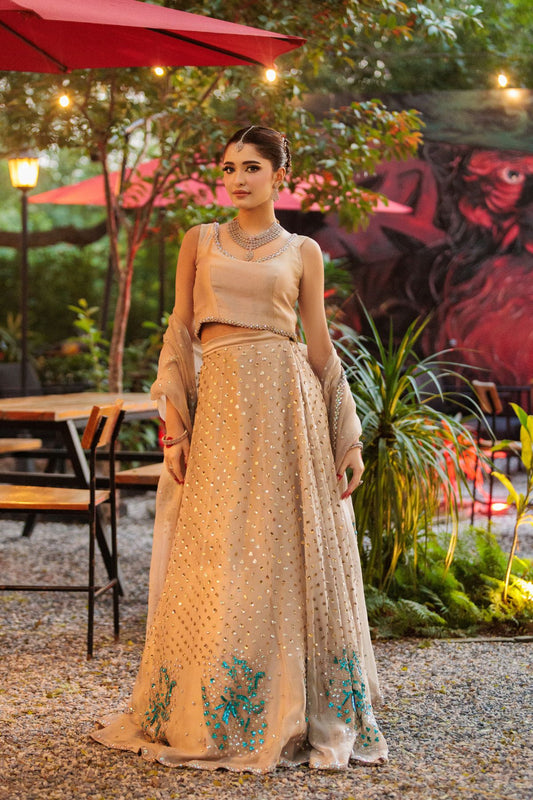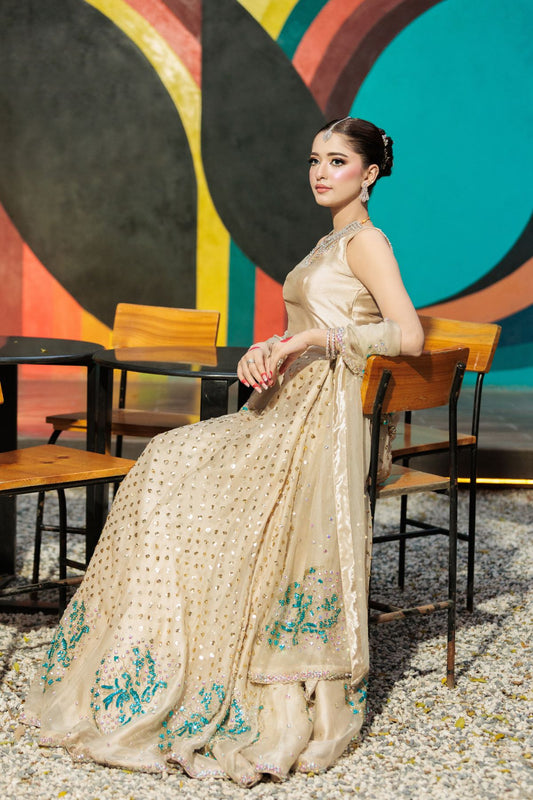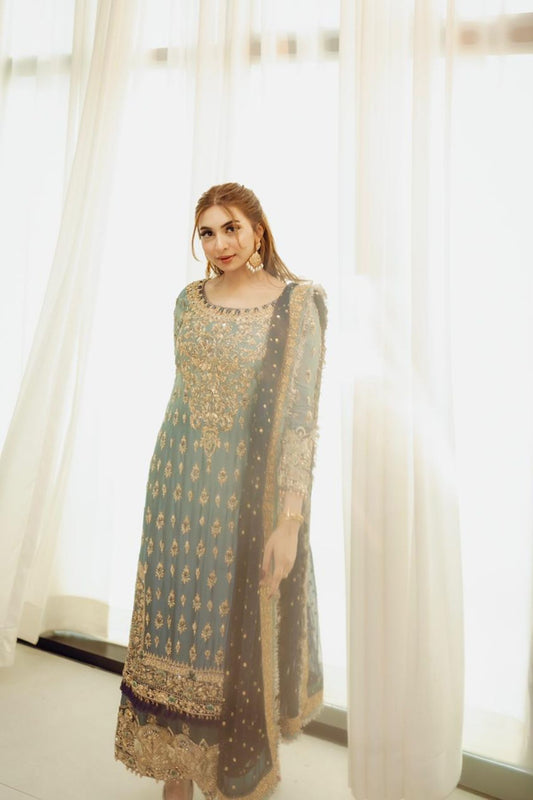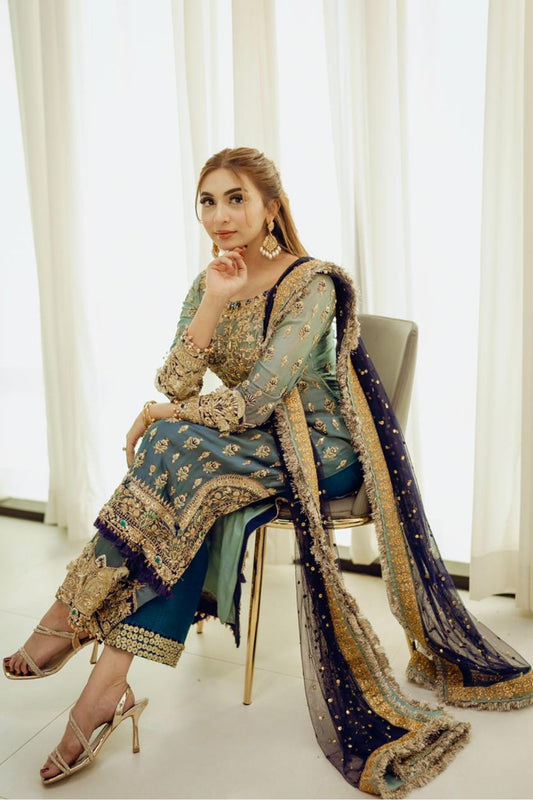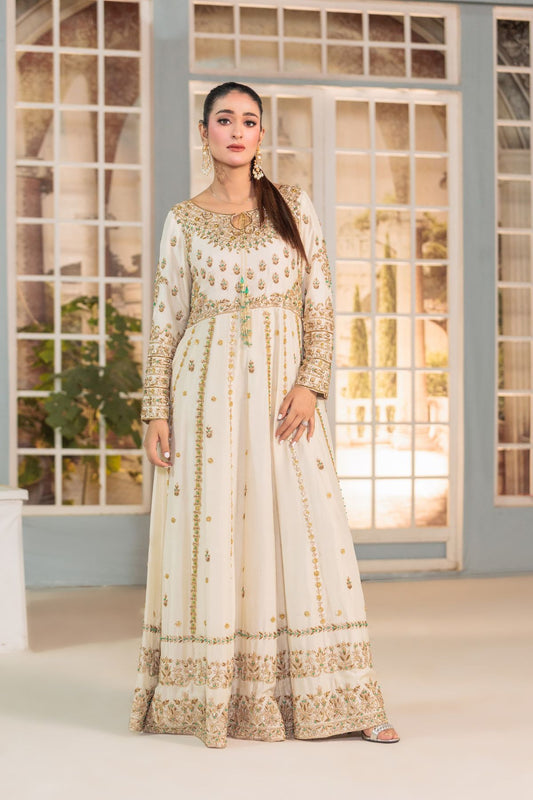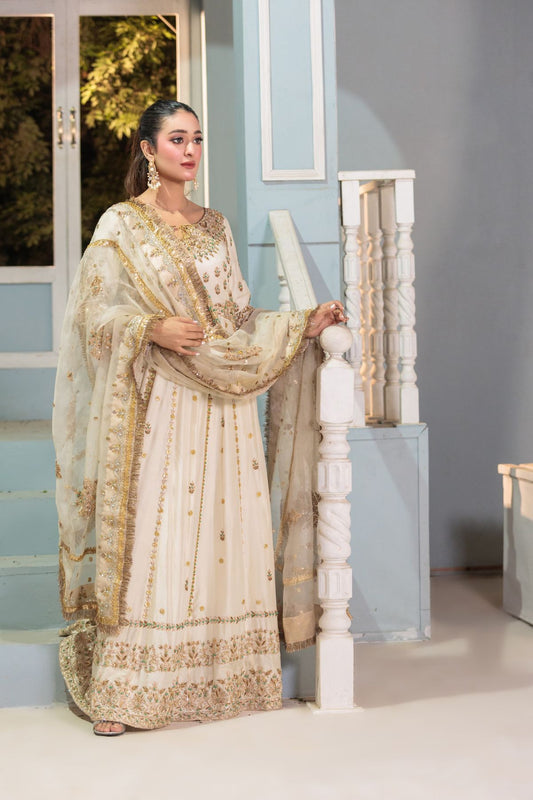From Zardozi to Resham: A Guide to Pakistani Bridal Embroidery Styles
Step into the enchanting world of Pakistani bridal embroidery styles and be captivated by the intricate artistry that adorns the wedding trousseaus. From the opulent Zardozi to the delicate Resham, this guide will take you on an exploration of the diverse embroidery traditions that define Pakistani bridal fashion.
With this guide, you'll gain a deeper understanding of the nuances and techniques behind these mesmerizing embroidery styles. Discover the origins, motifs, and significance that make each style unique, and embark on a journey that celebrates the rich cultural heritage of Pakistani bridal fashion.
Get ready to immerse yourself in an exquisite world of Pakistani bridal embroidery styles that will leave you awe-inspired and yearning for more.
History and significance of Zardozi embroidery
Zardozi embroidery has a rich history that dates back to the Mughal era. This ancient art form originated in Persia but found its true expression in the royal courts of India and later in Pakistan. The word "Zardozi" translates to "gold embroidery" in Persian, and it aptly describes the opulent and luxurious nature of this style.
Zardozi embroidery gained prominence during the Mughal period when it was used to embellish the garments and accessories of the nobility. The intricate gold and silver thread work, combined with precious stones and pearls, added a regal touch to the attire. It became a symbol of wealth, power, and prestige.
The significance of Zardozi embroidery goes beyond its aesthetic appeal. It represents the rich cultural heritage and craftsmanship of Pakistan. The artisans who practice this art form are highly skilled and dedicated to preserving the traditional techniques that have been passed down through generations.
Techniques and motifs used in Zardozi embroidery
Zardozi embroidery is a labor-intensive craft that requires meticulous attention to detail. The artisans use a variety of techniques to create the intricate designs and patterns that define this style. One of the key techniques is the "zari" work, where fine gold and silver threads are woven into the fabric using a needle.
In addition to zari work, other techniques like "aari" and "kamdani" are also used in Zardozi embroidery. Aari involves using a hooked needle to create intricate patterns, while kamdani involves attaching small pieces of metal to the fabric to create a shimmering effect.
The motifs used in Zardozi embroidery are inspired by nature, mythology, and geometric patterns. Common motifs include flowers, birds, paisleys, and intricate borders. Each motif has its own symbolism and significance, adding depth and meaning to the embroidery.
Resham embroidery: The art of silk threadwork
Resham embroidery, also known as silk threadwork, is another popular embroidery style in Pakistani bridal wear. Unlike Zardozi, which focuses on metallic threads, Resham embroidery celebrates the finesse and beauty of silk threads.
The art of Resham embroidery involves using brightly colored silk threads to create intricate designs and patterns on the fabric. The threads are skillfully woven into the fabric using a needle, resulting in a tapestry of color and texture. The delicate nature of Resham embroidery adds a touch of grace and elegance to any bridal outfit.
Resham embroidery is known for its versatility and flexibility. It can be used to create both delicate and bold designs, depending on the desired effect. Whether it's a subtle floral motif or a bold geometric pattern, Resham embroidery can effortlessly enhance the beauty of the fabric.
Different styles of Resham embroidery in Pakistani bridal wear
Pakistani bridal wear is known for its diversity and richness, and Resham embroidery plays a significant role in enhancing the beauty of these garments. There are several different styles of Resham embroidery that are popular in Pakistani bridal fashion.
One such style is the "Kashida" embroidery, which originated in the regions of Kashmir and Punjab. Kashida embroidery is characterized by its intricate floral motifs and vibrant color palette. It is often used to embellish bridal lehengas, sarees, and dupattas, adding a touch of traditional elegance to the ensemble.
Another popular style of Resham embroidery is the "Phulkari" embroidery, which originated in the region of Punjab. Phulkari embroidery is known for its bold and colorful designs, typically featuring floral motifs. It is often used to create stunning bridal shawls and dupattas, adding a vibrant and festive touch to the wedding attire.
Comparing Zardozi and Resham embroidery
While both Zardozi and Resham embroidery are exquisite forms of art, they differ in terms of techniques, materials, and aesthetics. Zardozi embroidery focuses on gold and silver threads, creating a rich and opulent look, while Resham embroidery celebrates the beauty of silk threads, resulting in a more delicate and graceful appearance.
In terms of techniques, Zardozi embroidery involves intricate needlework and the use of various embellishments like stones and pearls. Resham embroidery, on the other hand, relies solely on silk threads and needlework to create the designs.
Aesthetically, Zardozi embroidery tends to have a more regal and luxurious feel, while Resham embroidery exudes elegance and sophistication. The choice between the two styles ultimately depends on personal preference and the desired look for the bridal outfit.
Regional variations in Pakistani bridal embroidery styles
Pakistan is a country with diverse cultures and traditions, and this diversity is reflected in the regional variations of bridal embroidery styles. Each region has its own unique embroidery techniques, motifs, and color palettes that contribute to the richness of Pakistani bridal fashion.
In the province of Punjab, for example, the embroidery styles are characterized by their bold and vibrant designs. Phulkari embroidery, with its colorful floral motifs, is a popular choice for bridal wear in this region. The use of bright reds, pinks, and oranges adds a festive and celebratory touch to the garments.
In contrast, the embroidery styles in the province of Sindh are known for their delicate and intricate designs. The "Sindhi" embroidery, with its fine stitch work and geometric patterns, is a hallmark of bridal wear in this region. The use of pastel colors and metallic threads adds a touch of sophistication and elegance.
The province of Balochistan is known for its rich cultural heritage, and the embroidery styles reflect this uniqueness. The "Balochi" embroidery, with its bold motifs and vibrant color palette, is often used to embellish bridal attire. The use of mirrors and metallic threads adds a captivating touch to the garments.
Modern trends and innovations in Pakistani bridal embroidery
While traditional embroidery styles continue to be popular in Pakistani bridal wear, modern trends and innovations have also made their way into the fashion industry. Designers are constantly experimenting with new techniques, materials, and motifs to create unique and contemporary bridal ensembles.
One such trend is the fusion of different embroidery styles to create a more eclectic look. Designers are combining Zardozi and Resham embroidery, along with other techniques like mirror work and beadwork, to create stunning and one-of-a-kind bridal outfits. This fusion of styles adds a modern twist to traditional embroidery.
Another trend is the incorporation of unconventional materials in bridal embroidery. Designers are experimenting with fabrics like net, organza, and chiffon, and embellishing them with embroidery to create a lightweight and ethereal look. This trend adds a contemporary and romantic touch to bridal wear.
In addition to new techniques and materials, designers are also exploring innovative motifs and patterns. From abstract designs to geometric patterns, the options are endless. This allows brides to express their individuality and personal style through their choice of embroidery.
Tips for choosing the right embroidery style for your bridal outfit
Choosing the right embroidery style for your bridal outfit is essential to creating a cohesive and harmonious look. Here are some tips to help you make the right decision:
- Consider your personal style and preferences. Do you prefer a regal and opulent look or a delicate and graceful appearance? Understanding your style will guide you in choosing between Zardozi and Resham embroidery.
- Take into account the type of fabric you'll be using. Zardozi embroidery works best on heavy fabrics like velvet and silk, while Resham embroidery can be used on a variety of fabrics, including lightweight ones like chiffon and organza.
- Consider the color palette of your outfit. Zardozi embroidery is often associated with gold and silver threads, while Resham embroidery allows for a wider range of colors. Choose an embroidery style that complements the colors of your outfit.
- Think about the overall theme and aesthetic of your wedding. If you're going for a traditional and regal look, Zardozi embroidery might be the perfect choice. If you want a more contemporary and romantic look, Resham embroidery could be the way to go.
- Consult with a designer or embroidery expert. They can guide you in choosing the right embroidery style based on your preferences, budget, and the overall vision for your bridal outfit.
Conclusion
Pakistani bridal embroidery styles are a testament to the rich cultural heritage and craftsmanship of the country. From the opulent Zardozi to the delicate Resham, each embroidery style tells a story of its own. The intricate artistry and attention to detail that go into creating these masterpieces are awe-inspiring.
Whether you choose Zardozi or Resham embroidery, or a fusion of both, Pakistani bridal wear offers a diverse range of options to suit every bride's taste and style. The embroidery styles not only enhance the beauty of the garments but also add depth and significance to the overall wedding ensemble.
Immerse yourself in the enchanting world of Pakistani bridal embroidery styles and let the artistry and craftsmanship captivate your imagination. Explore the origins, techniques, and motifs that define these embroidery styles, and celebrate the rich cultural heritage of Pakistani bridal fashion.

